Are you struggling to improve your website’s search engine optimization (SEO)? Do you find it challenging to attract the right visitors and convert them into customers?
If so, then long-tail keywords might be the solution you’ve been searching for.
Long tail keywords are an essential component of a successful SEO strategy. Unlike generic keywords that target a broad audience, long-tail keywords focus on specific user intent.
By incorporating these longer and more specific phrases into your content, you can better align with what users are searching for.
Long-tail keywords have lower search volume compared to their broader counterparts, yet at the same time, they often boast higher conversion rates. This means that by targeting long-tail keywords — you can and will attract visitors who are genuinely interested in your topic or product.
Moreover, using long-tail keywords gives your website a competitive edge by helping it stand out among the sea of generic search results.
In the following few sections, we will delve into the importance of long-tail keywords and how they can benefit your website’s SEO efforts.
So let’s dive in and discover how these targeted phrases can make a significant impact on your online presence.
- What are Long Tail Keywords?
- Importance of Long Tail Keywords for SEO
- Examples of Long Tail Keywords
- Advantages of Targeting User Intent with Long Tail Keywords
- Building Content around Long Tail Keywords
- Integrating Long Tail Keywords into Posts: Headlines and Internal Links
- High Conversion Rates with Long Tail Keywords
- Understanding the Market Competitiveness of Long Tail Keywords
- How to Find Long Tail Keywords?
- Factors Influencing the Ranking of Long Tail Keywords
- Additional FAQs on Long-Tail Keywords
- Conclusion: The Power of Long Tail Keywords
What are Long Tail Keywords?
Long-tail keywords, also known as long-tail terms, are longer and more specific keyword phrases that users enter into search engines.
Unlike short tail or head keywords, which typically consist of one or two words, long tail keywords usually contain three or more words.
Less Competition and More Targeted Results
One of the primary advantages of incorporating long-tail keywords into your content is that they have less competition in search engine rankings compared to short-tail keywords.
While primary keywords may receive a higher volume of searches, they are often highly competitive due to their broad nature.
On the other hand, long-tail keywords have a narrower focus and attract a smaller but more targeted audience.
For example:
- Short Tail Keyword: “shoes”
- Long Tail Keyword: “Comfortable running shoes for women with high arches.”
By targeting a specific niche with long tail keywords like the one above, you can increase your odds of ranking higher in search results. This means that when users search for these more detailed queries, your website has a better chance of appearing at the top.
The Power of Long Tail Keyword Research
To effectively utilize long-tail keywords in your SEO strategy, conducting thorough keyword research is essential.
Start by brainstorming seed keywords related to your main topic or industry. Seed keywords are general terms that can be expanded into various long-tail variations.
Once you have identified seed keywords, use keyword research tools such as Google Keyword Planner, SEMrush, or Ahrefs to generate a list of potential long tails associated with those seeds.
Look for phrases that align with user intent and reflect what people might type into search engines when seeking information on your topic.
For example:
| Seed Keyword | Long Tail Keywords |
|---|---|
| “healthy recipes” | “quick and easy healthy recipes for breakfast” “low-carb vegetarian healthy recipes” “healthy recipes for weight loss” |
By strategically incorporating these long-tail keywords into your content, you can attract a more specific audience interested in those particular topics. This targeted approach increases the odds of converting visitors into customers or subscribers.
Importance of Long Tail Keywords for SEO
Long tail keywords are crucial in any effective search engine optimization (SEO) strategy.
By targeting these specific and more extended keyword phrases, businesses can drive targeted organic traffic to their websites, improve their chances of ranking higher in search engine results pages (SERPs), cater to niche markets and specific user needs, and ultimately achieve higher conversion rates.
Driving Targeted Organic Traffic
The goal is not just to generate any traffic but to attract relevant visitors who are more likely to engage with your content or make a purchase.
Long tail keywords play a vital role in achieving this objective. These longer, more specific phrases help filter out irrelevant traffic and bring in users actively searching for your offer.
For example, instead of targeting the broad term “SEO tools,” you could focus on long tail keywords like “best SEO tool for small businesses” or “affordable SEO software for startups.”
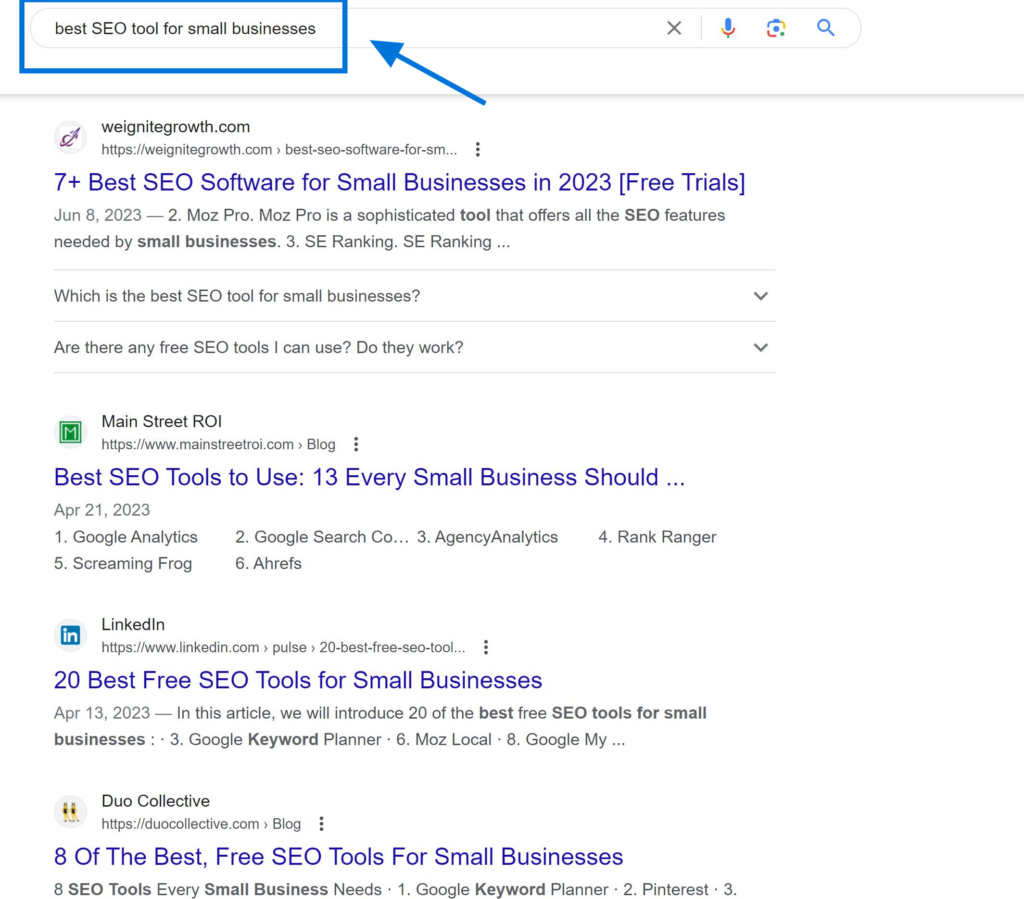
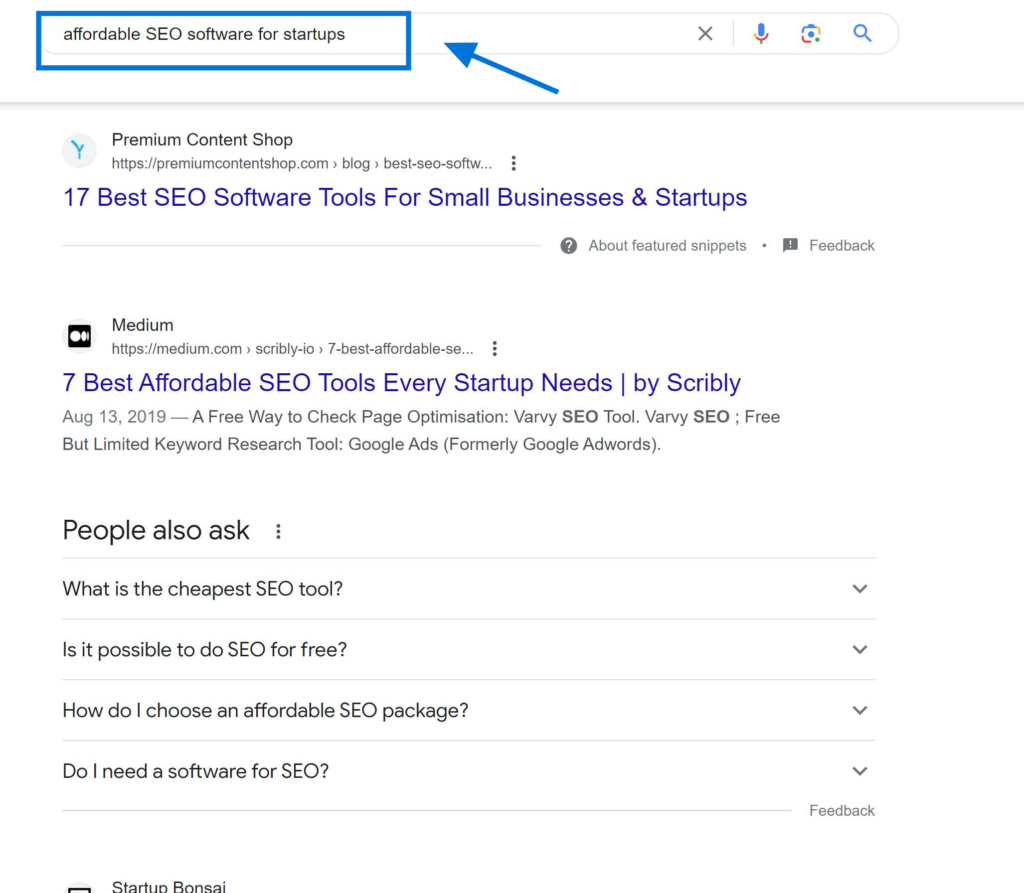
By incorporating these variations into your content strategy, you increase the likelihood of attracting users who have a genuine interest in your product or service.
Higher Ranking Potential
Ranking high on SERPs is every website owner’s dream. However, competing against established websites for generic keywords can be challenging. This is where long-tail keywords come into play.
Due to their specificity and lower competition levels, they present an opportunity for smaller businesses or new websites to rank higher.
For instance, if you operate a boutique coffee shop in San Francisco, targeting the keyword “coffee shop” may be futile due to fierce competition.
Instead, focusing on long-tail keywords such as “best artisanal coffee shop in San Francisco“ or “organic coffee beans in San Francisco“ allows you to tap into a less crowded market and increase your chances of ranking prominently.
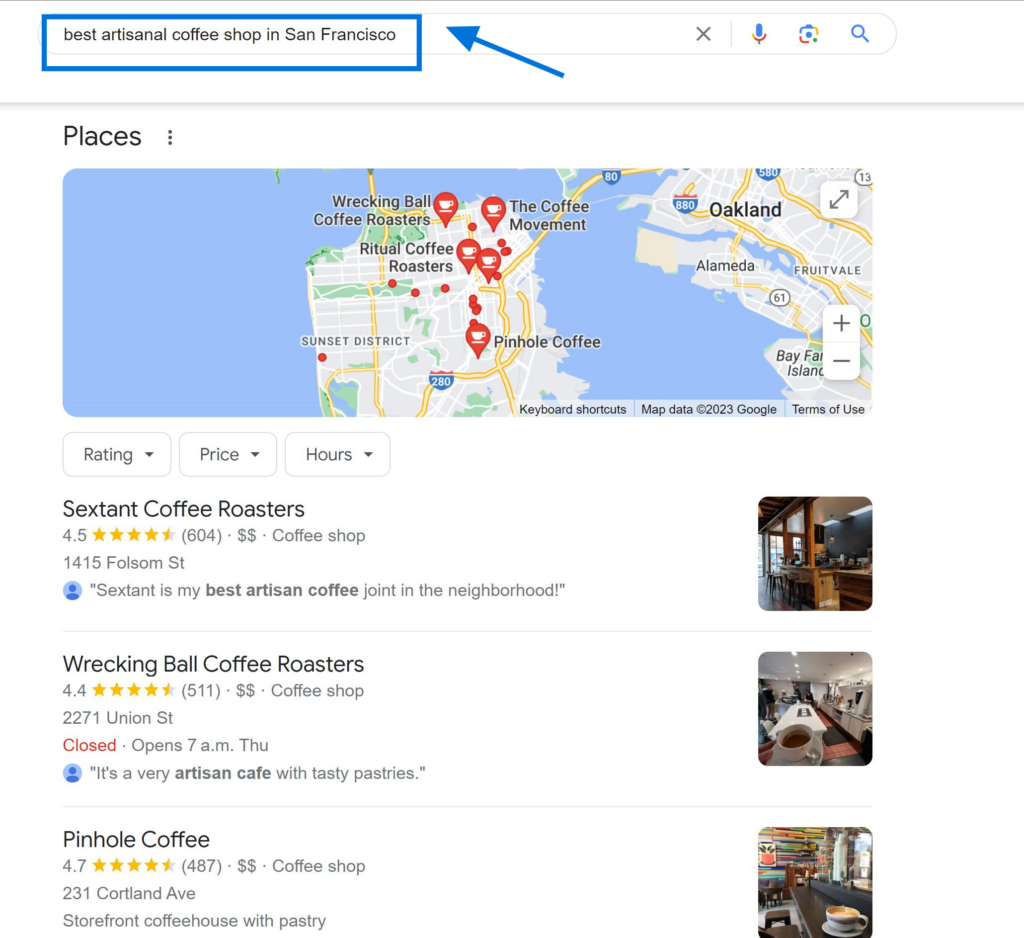
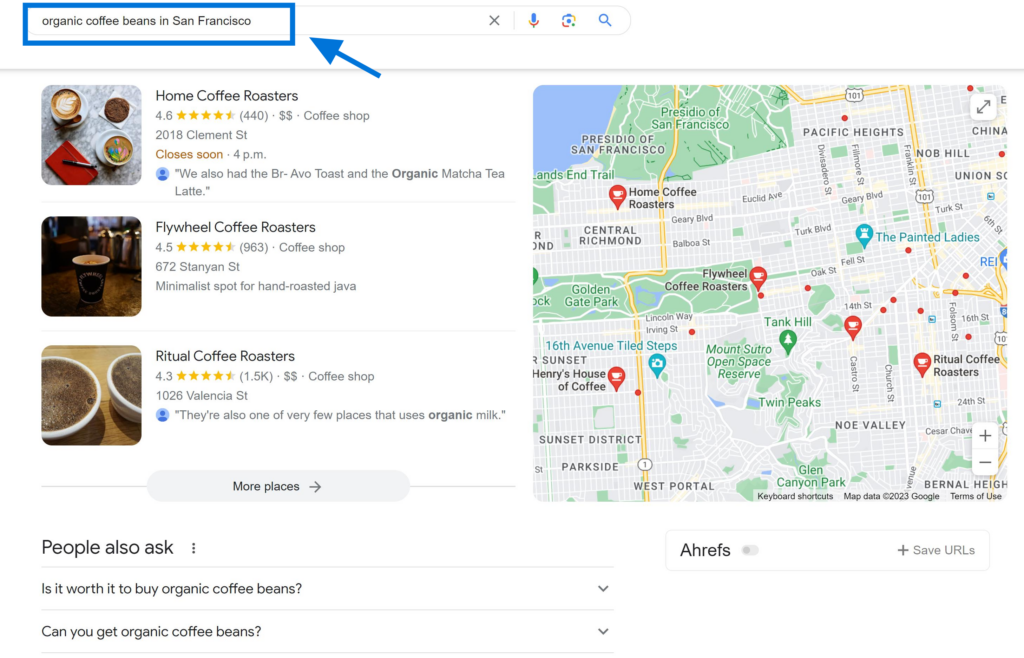
Niche Markets and User Needs
One significant advantage of utilizing long-tail keywords is the ability to cater to niche markets and address specific user needs. These phrases often reflect users’ intent and can provide valuable insights into their preferences and pain points.
For example, if you run an online pet supply store, targeting the long tail keyword “organic grain-free dog food for sensitive stomachs” would attract pet owners with specific dietary requirements for their furry friends.
Examples of Long Tail Keywords
“Best Running Shoes for Flat Feet”
Individuals with flat feet face unique challenges. They require footwear that provides adequate support and stability to prevent discomfort and potential injuries.
Searching for “best running shoes” may yield numerous results. Still, by incorporating specific long tail keyword phrases like “best running shoes for flat feet,” individuals can narrow down their options and find the ideal shoe.
Here are some popular long-tail keyword ideas related to running shoes for flat feet:
- “Best cushioned running shoes for flat arches”
- “Stability sneakers for low arches”
- “Wide width running shoes for overpronation”
By utilizing these specific keywords, individuals can conduct effective keyword research and discover suitable options tailored to their needs.
“How to Lose Weight After Pregnancy”
Losing weight after pregnancy is a common goal among new mothers. However, navigating through the vast amount of information available online can be challenging.
To obtain relevant advice and guidance, using specific long-tail keyword phrases related to post-pregnancy weight loss is crucial.
Consider these keyword suggestions when conducting your search:
- “Safe exercises to lose weight after giving birth”
- “Healthy diet plan for postpartum weight loss”
- “Tips to shed baby weight without compromising milk supply”
By incorporating these question keywords into your search queries, you will uncover valuable resources specifically addressing how to lose weight after pregnancy safely and healthily.
“Affordable Digital Marketing Courses Online”
In today’s digital age, a solid understanding of digital marketing is essential for businesses and professionals.
However, finding affordable yet comprehensive digital marketing courses online can be overwhelming amidst the abundance of options available.
To pinpoint budget-friendly alternatives without compromising quality or content, consider using the following long-tail keyword variations during your search:
- “Top-rated affordable digital marketing courses online”
- “Best value digital marketing courses for beginners”
- “Inexpensive online courses for mastering digital marketing”
By incorporating these specific long-tail keywords, individuals can efficiently identify high-quality and affordable digital marketing courses that suit their needs and budget.
Advantages of Targeting User Intent with Long Tail Keywords
Targeting user intent with long-tail keywords is a powerful strategy that can significantly improve your website’s visibility and attract highly relevant traffic.
By understanding users’ specific needs and desires, you can create content that matches their search queries and addresses their pain points effectively.
Meeting User Expectations
When users conduct a search, they have a specific goal or intention in mind. Targeting user intent with long-tail keywords increases the likelihood of meeting their expectations.
Unlike generic short-tail keywords, long-tail keywords provide more context and specificity about what users are looking for. It enables you to deliver highly relevant content that aligns perfectly with their search queries.
For example, if someone searches for “best running shoes for flat feet,” they are likely seeking recommendations tailored to their specific condition.
By optimizing your content around this long tail keyword, you can create an article or product page that directly addresses their needs. This not only enhances the user experience but also increases the chances of conversion as visitors find exactly what they were searching for.
Highly Relevant Content
Long tail keywords help you deliver highly relevant content by capturing the essence of what users are searching for. These keywords often reflect specific questions or phrases used by individuals seeking solutions or information online.
Incorporating these long-tail keywords into your content ensures that it resonates with your target audience.
For instance, if someone searches for “how to train a puppy to sit,” they have a clear intention to learn how to teach their new furry friend this basic command.
By creating an article titled “A Step-by-Step Guide: Training Your Puppy to Sit,” you address their query directly and offer valuable insights on achieving this training milestone. This targeted approach not only satisfies user intent but also positions your website as a reliable source of information.
Addressing Specific Needs and Pain Points
Understanding user intent allows you to identify their specific needs and pain points.
By tailoring your content to address these concerns, you can establish yourself as an authority in your niche and build trust with your audience.
Building Content around Long Tail Keywords
Research Popular Topics Related to Your Industry.
Understanding the importance of long-tail keywords is crucial. These keywords are longer and more specific phrases that users often search for in organic search.
By targeting these long-tail keywords, you can tap into a niche audience and drive relevant traffic to your website.
To start building content around long-tail keywords, begin by researching popular topics related to your industry.
Look for trending discussions on forums, social media platforms, and industry-specific websites. This will give you valuable insights into what people are currently interested in and searching for.
Identify Long-Tail Keyword Variations Within Those Topics.
Once you have identified the popular topics within your industry, the next step is to identify long-tail keyword variations within those topics.
Long tail keywords often consist of three or more highly specific words. They typically have lower search volumes but higher conversion rates. It is because they target users who know exactly what they’re looking for.
Use keyword research tools like Google Keyword Planner or Ahrefs to find relevant long-tail keyword variations.
Look for keywords that have moderate search volumes and low competition. This will ensure you can rank well for these keywords without facing too much competition from other websites.
Create High-Quality, Informative Content Around These Long-Tail Keyword Variations
Now that you have identified the long-tail keyword variations, creating high-quality and informative content around them is time.
Focus on providing value to your audience by addressing their unique pain points and offering targeted solutions through your content.
Consider using different types of content, such as blog posts, articles, videos, infographics, or podcasts, depending on what suits your niche and target audience best.
Ensure each piece of content is well-researched, engaging, and provides actionable information.
Optimize Your Content by Including the Identified Long-Tail Keywords Naturally
To maximize the visibility of your content in search engine results, it’s important to optimize it by naturally including the identified long-tail keywords.
Incorporate these keywords in your headlines, subheadings, meta tags, and throughout the body of your content.
However, avoid keyword stuffing or overusing the keywords, which can negatively impact your SEO efforts.
Integrating Long Tail Keywords into Posts: Headlines and Internal Links
Use Long-Tail Keywords in Headlines to Attract Targeted Traffic
Using long-tail keywords in your headlines can make a significant difference. Unlike generic or broad keywords, long-tail keywords are more specific phrases that target a niche audience.
By incorporating these targeted terms into your headlines, you can attract more relevant traffic to your blog.
For example, instead of using a generic headline like “Tips for Writing Blog Posts,” consider using a long-tail keyword such as “Effective Strategies for Writing Engaging Blog Posts.”
This not only helps search engines understand the focus of your content but also signals to readers that they will find valuable information related to their specific needs.
Include Internal Links Using Relevant Anchor Text with Long-Tail Keywords
Internal linking is an essential aspect of on-page SEO.
By strategically placing internal links within your blog posts, you can guide both search engines and readers through your website, improving overall user experience and increasing the visibility of related content.
To optimize this strategy further, incorporate relevant anchor text containing long-tail keywords when creating internal links.
For instance, if you have a blog post discussing “10 Tips for Writing Engaging Blog Posts,” you could internally link the phrase “engaging blog posts” to another article specifically focusing on that topic.
This approach helps with SEO and provides additional value to your audience by offering them more in-depth information on subjects they are interested in.
Ensure the Placement of Long-Tail Keywords in A Natural and Seamless Manner
While integrating long-tail keywords is crucial for SEO purposes, ensuring that their placement within your content feels organic and seamless is important.
Keyword stuffing or forcefully inserting keywords may lead to poor readability and negatively impact user experience.
To avoid this issue, carefully incorporate long-tail keywords throughout your content in a natural way.
Instead of forcefully repeating the same keyword multiple times, focus on using variations and synonyms to maintain a conversational tone.
By doing so, you can effectively optimize your blog posts for search engines without sacrificing the quality and readability of your content.
High Conversion Rates with Long Tail Keywords
Long tail keywords have become increasingly popular in digital marketing due to their ability to generate high conversion rates.
Unlike generic keywords with high search volumes, long tail keywords are more specific and attract users who are closer to making a purchasing decision.
Targeting long-tail keywords can significantly improve your conversion rate.
By optimizing your website and PPC campaigns for these low search volume but high-quality keywords, you can reach a more qualified audience that is actively looking for what you offer.
One of the main reasons why long-tail keywords result in higher conversion rates is their ability to address specific user needs.
When someone searches for a long tail keyword like “easy cold brew coffee recipe,” they are likely looking for step-by-step instructions on how to make this particular type of coffee. By providing relevant content that caters to their query, you increase the likelihood of conversions.
Long tail keywords allow you to optimize your website and PPC campaigns based on buyer personas.
Understanding your target audience’s preferences and pain points helps you create tailored content that resonates with them. This personalized approach enhances engagement and encourages users to click through, ultimately leading to higher conversion rates.
Using long-tail keywords also provides an opportunity for businesses operating in niche markets or industries with lower search volumes.
While generic keywords may be highly competitive, ranking well for specific long-tail phrases becomes easier due to lower competition levels.
As a result, businesses can establish themselves as authorities within their niche and attract highly targeted traffic that converts at a higher rate.
To effectively utilize long-tail keywords for better conversion rates, consider the following strategies:
- Conduct thorough keyword research: Use tools like Ahrefs or Google Keyword Planner to identify relevant long-tail keywords related to your products or services.
- Optimize landing pages: Create dedicated landing pages optimized around specific long tail keywords, ensuring the content addresses the user’s query.
- Tailor content to user intent: Understand the searcher’s intent behind the long tail keyword and provide valuable information or solutions that meet their needs.
- Monitor and analyze performance: Regularly track the conversion rates of your long-tail keywords to identify which ones are driving the most conversions.
Understanding the Market Competitiveness of Long Tail Keywords
Analyzing the market competitiveness of long-tail keywords is crucial for any successful marketing strategy.
By evaluating keyword difficulty, competition, search volume, and trends, you can identify less competitive but highly relevant long-tail keywords to target.
Analyze Keyword Difficulty and Competition for Each Long Tail Keyword
Understanding the level of competition for your chosen long-tail keywords is essential.
Keyword difficulty refers to how challenging it is to rank organically for a specific keyword.
To analyze keyword difficulty:
- Use Ahrefs or SEMrush to identify potential long-tail keywords.
- Evaluate the competition level associated with each keyword.
- Look at metrics such as domain authority and backlink profiles of top-ranking websites.
- Consider factors like page authority, content relevance, and social signals.
Evaluate Search Volume and Trends Related to Your Chosen Long Tail Keywords
Understanding the search demand curve and trends related to your chosen long tail keywords helps determine their market competitiveness.
Search volume indicates how frequently users are searching for a particular term or phrase within a specific timeframe.
To evaluate search volume and trends:
- Utilize tools like Ahrefs or SEMrush to analyze historical data.
- Identify seasonal variations in search volume that may impact your targeted keywords.
- Look for upward or downward trends in search demand over time.
- Compare the search volumes of different long-tail keywords within your niche.
Consider Using SEO Tools for Market Competitiveness Analysis
Tools such as Google Keyword Planner, Ahrefs, Moz, and SEMrush provide valuable insights into market competitiveness analysis by offering comprehensive data on competitors’ strategies and performance metrics.
Using these tools:
- Identify competitor websites ranking for your target long tail keywords.
- Analyze their content, backlink profiles, and on-page optimization techniques.
- Look for gaps in their strategies that you can capitalize on.
- Determine the level of competition within your niche.
How to Find Long Tail Keywords?
Utilize Keyword Research Tools Like Google Keyword Planner, SEMrush, or Ahrefs.
Using keyword research tools can be immensely helpful. These tools provide valuable insights into the search volume and competition of various keywords.
One popular tool is Google Keyword Planner, which allows you to explore keyword ideas and get an estimate of their monthly search volumes.
SEMrush and Ahrefs are excellent options offering comprehensive keyword analysis and competitor research capabilities.
Analyze Search Suggestions Provided by Search Engines when Typing in Seed Keywords.
Another effective strategy for uncovering long-tail keywords is analyzing the search suggestions provided by search engines (Google autocomplete suggestions). When you start typing a seed keyword into a search engine’s query box, it automatically generates a list of related searches based on user behavior.
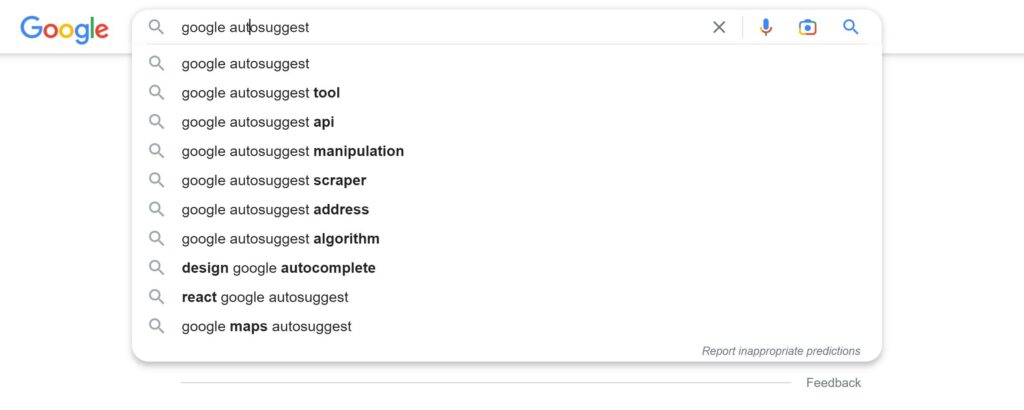
These suggestions often include long-tail variations of the original keyword that can be highly relevant to your content. By incorporating these suggested phrases into your SEO strategy, you can tap into your target audience’s specific needs and interests.
Explore Online Forums, Social Media Platforms, and Q&a Websites for Common Questions Related to Your Industry.
To truly understand what your audience is searching for, it’s essential to delve into online communities where they actively engage.
Online forums such as Reddit or Quora are treasure troves of information where people ask questions about various topics.
You can identify common queries or pain points within your industry by exploring relevant threads and discussions in these forums.

Social media platforms like Facebook groups or LinkedIn communities allow you to connect with like-minded individuals who may have specific questions or problems that need solving.
Lastly, Q&A websites such as Yahoo Answers or Stack Exchange provide valuable insights into people’s queries regarding different subjects.
Study Competitor Websites and Identify the Long-Tail Keywords They Are Targeting.
Analyzing competitor websites is an effective way to gain inspiration for your own long-tail keyword strategy.
By studying your competitors’ content and SEO tactics, you can identify the long-tail keywords they are targeting.
Tools like SEMrush or Ahrefs offer competitor analysis features that allow you to see which keywords your competition is ranking for. This information can give you valuable insights into what keywords are driving traffic and engagement in your industry.
Factors Influencing the Ranking of Long Tail Keywords
Relevance of Content to the Targeted Long-Tail Keyword
One of the most crucial factors influencing their search rankings is the relevance of content.
Search engines strive to provide users with the most relevant results for their queries. Therefore, creating high-quality content that aligns with your targeted long-tail keyword is essential.
To ensure relevance, it is important to incorporate the long-tail keyword naturally throughout your content. This includes using it in headings, subheadings, and within the body text.
Consider including related terms and synonyms to further enhance the topical relevance.
Quality and Authority of Backlinks Pointing Toward Your Content
Backlinks play a significant role in determining search rankings for both short and long-tail keywords.
However, Quality becomes even more critical. Acquiring authoritative backlinks from reputable websites can significantly boost your ranking position.
To improve your chances of obtaining high-quality backlinks, focus on creating valuable and shareable content that others in your industry would find useful. This could include comprehensive guides, expert interviews, or insightful case studies.
By consistently producing compelling content, you increase the likelihood of attracting authoritative backlinks.
User Engagement Metrics such as Click-Through Rate (CTR) and Time Spent on Page
User engagement metrics are becoming increasingly influential in search engine algorithms.
For long tail keywords specifically, user behavior signals such as click-through rate (CTR) and time spent on page can impact rankings.
A high CTR indicates that users find your title and meta description appealing enough to click through to your website from search results pages.
To optimize CTR for long tail keywords, ensure that your title tag accurately reflects what users can expect from clicking on your link.
Furthermore, once users land on your page after clicking through from search results pages, providing them with valuable and engaging content is vital.
The longer users spend on your page; the more search engines interpret it as a positive signal of relevance and quality.
Additional FAQs on Long-Tail Keywords
What Is the Difference Between Long-Tail Keywords and Short-Tail Keywords?
Long tail keywords are longer phrases that are more specific and have lower search volumes compared to short tail keywords.
Short tail keywords are shorter, broader terms with higher search volumes but face much higher competition.
How Do I Find Long-Tail Keywords?
You can find long-tail keywords by researching using tools like Google Keyword Planner, SEMrush, or Moz Keyword Explorer.
Look for longer phrases related to your niche or industry that have moderate search volumes but low competition.
Can I Use Long-Tail Keywords in My PPC Campaigns?
Yes! Long tail keywords can be highly effective in PPC campaigns as they tend to have lower competition and cost per click compared to short tail keywords.
They also attract more qualified leads since users searching with specific phrases usually have a clearer intent.
Do I Need to Use Exact Match Long Tail Keywords in My Content?
While using exact match long tail keywords can be beneficial, it’s not always necessary.
Search engines have become smarter at understanding user intent, so variations or related phrases of your target long tail keyword can still help your content rank well.
How Long Should My Content Be When Targeting Long Tail Keywords?
There’s no set rule for the length of content when targeting long-tail keywords.
However, it’s generally recommended to create comprehensive and informative content that thoroughly covers the topic or addresses the user’s query.
Aim for a length that provides value and satisfies the user’s intent.
Conclusion: The Power of Long Tail Keywords
So there you have it, the power of long-tail keywords!
By now, you understand what they are and why they are important for SEO. You’ve seen examples of how they can be used effectively and their advantages in targeting user intent.
You know how to build content around them, integrate them into your posts, and analyze their market competitiveness.
Plus, we’ve covered how to find long-tail keywords and the factors influencing their ranking.
Now it’s time for you to take action. Start incorporating long tail keywords into your SEO strategy today and watch as your website boosts the search engine rankings.
Remember, these keywords allow you to tap into specific niches and attract highly targeted traffic. So don’t miss out on this opportunity to drive more organic traffic to your site!
